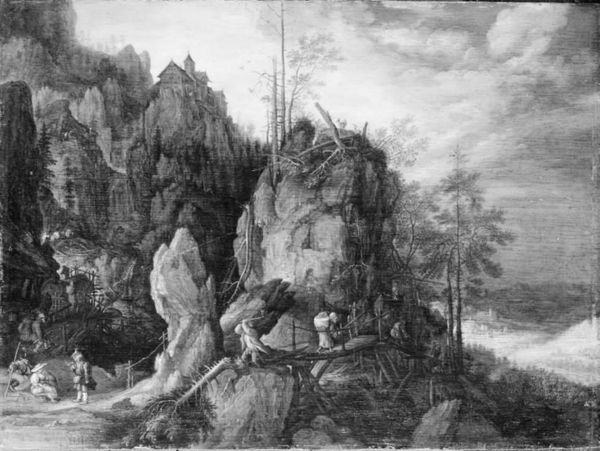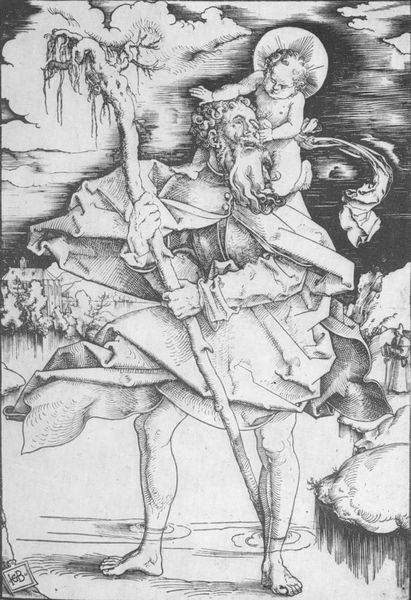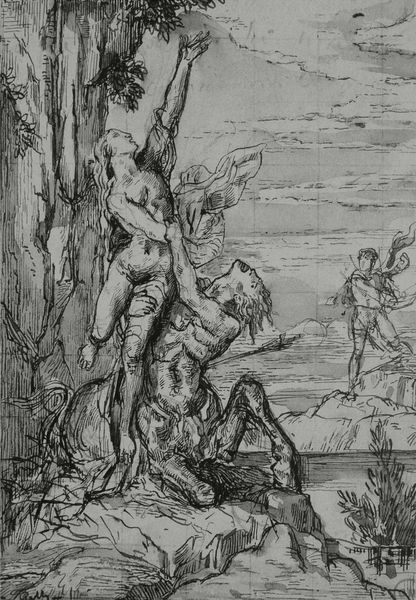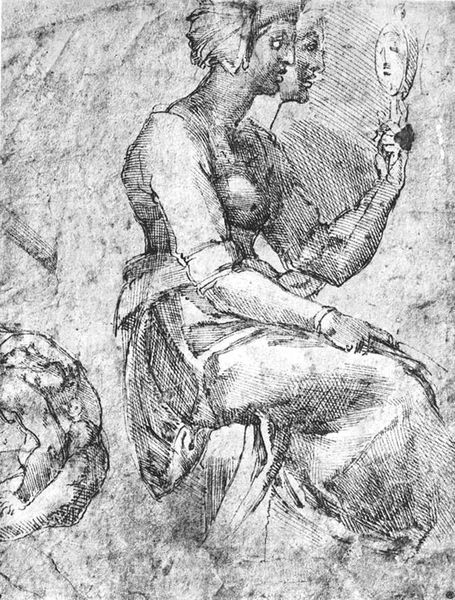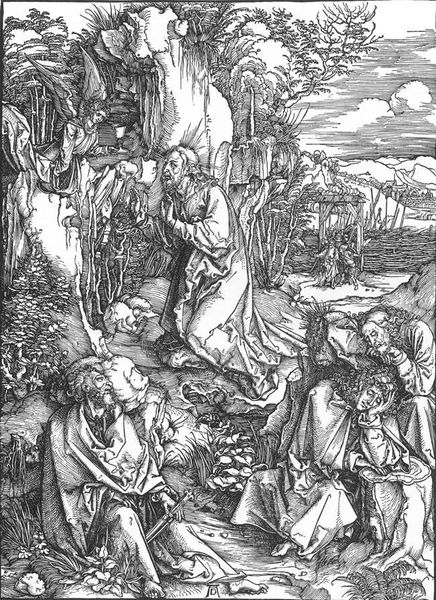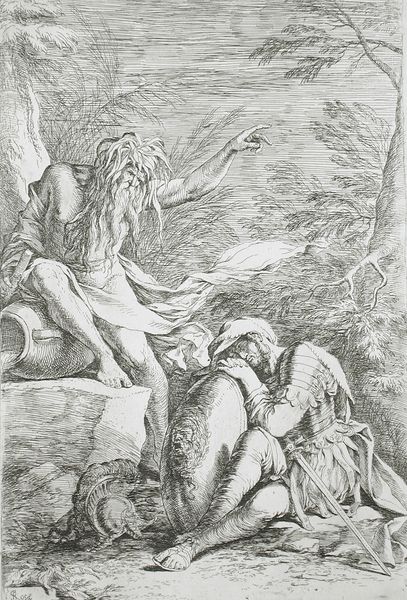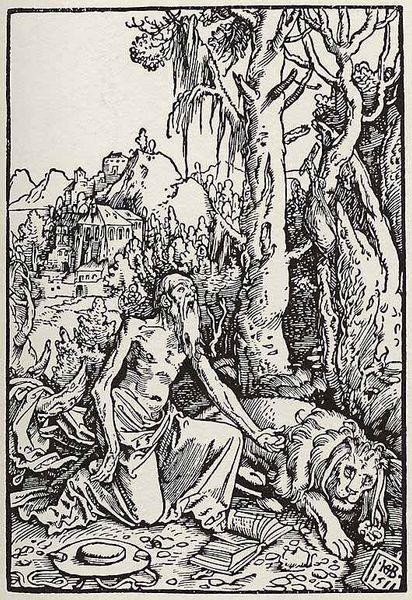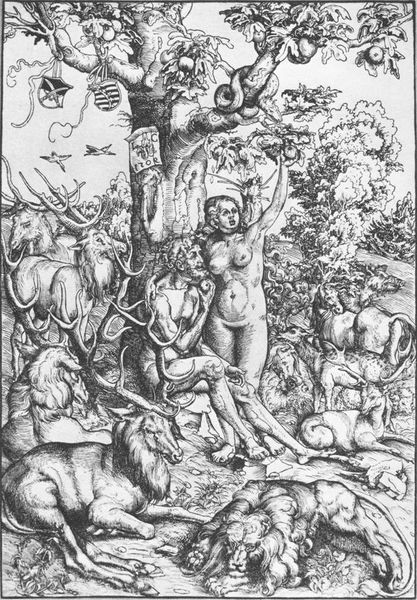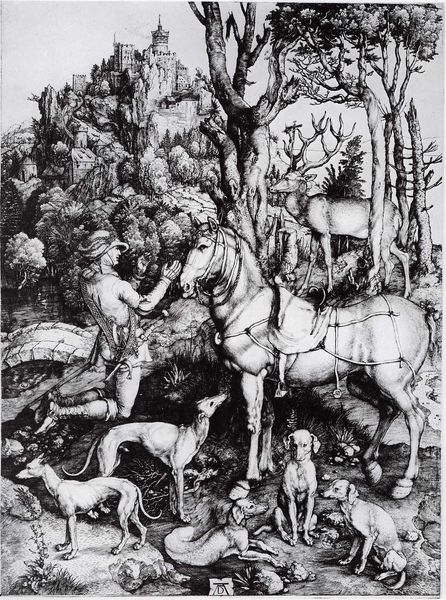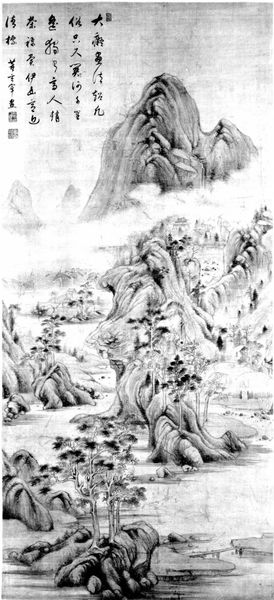
print, woodcut, engraving
portrait
medieval
self-portrait
landscape
figuration
woodcut
christianity
line
history-painting
northern-renaissance
engraving
realism
Copyright: Public domain
Curator: Let’s discuss Albrecht Dürer’s “St Jerome Penitent in the Wilderness,” created around 1496. It's a woodcut print, a powerful image showcasing the saint’s piety. Editor: Immediately, I notice the incredible detail achieved through the woodcut medium. The density of lines creates a dramatic contrast between light and shadow, emphasizing the roughness of the saint’s environment. You can almost feel the chill in the air. Curator: Exactly. Consider the socio-religious context. This image taps into the late medieval obsession with penance and self-inflicted suffering, especially significant during a period of social upheaval and anxieties around salvation. Jerome's lean figure is demonstrably male, calling attention to a Western and biblical definition of suffering in nature. Editor: Absolutely. Looking closer, you see Dürer’s skill in handling the material; observe how the parallel hatching builds up the forms and defines textures—the saint’s musculature, the lion’s mane, the rocky landscape. Curator: And those meticulously rendered rocks and trees! The landscape isn’t just background; it reflects Jerome's inner state – a psychological landscape shaped by spiritual struggle and, of course, an explicitly masculine understanding of what that might be. The positioning of the town on the horizon subtly juxtaposes holy isolation with societal obligations, even norms. Editor: It's also about the labor invested. Creating these lines with a burin on wood demands immense skill and physical effort. Each mark is deliberate, contributing to the overall impact of the composition and challenging conventional modes of religious artworks at the time. Consider also how the printing and circulation of the woodcut transformed art consumption in the late 15th century. Curator: And for whom, though? Examining who benefitted most from these prints provides further critical perspective: the cultural elites that Durer attempted to court by showcasing a saint enduring visible trials to earn their divine position, for example. Editor: Fascinating to think about how Dürer’s engagement with the physical process of printmaking ultimately connects to both spiritual themes and tangible socio-economic realities of art. Curator: Indeed, examining that interplay provides critical insight into Northern Renaissance ideologies about body and soul. Editor: Yes, and how Dürer leveraged the characteristics of the print to both affirm and, possibly, implicitly question social divisions through religious icons and labor practices.
Comments
No comments
Be the first to comment and join the conversation on the ultimate creative platform.
